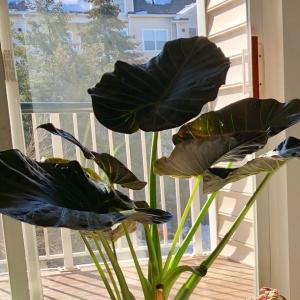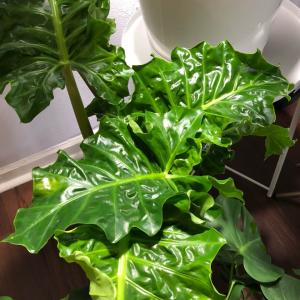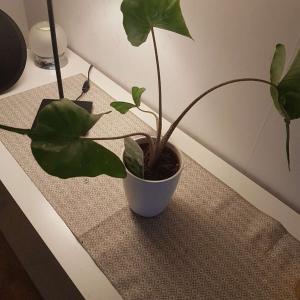成长记
Llamadrama
2017年11月11日
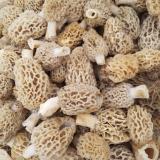
I now added "Alocasia Amazonica - Amazon Elephant's Ear" in my "garden"


0
0
文章
Dummer. ゛☀
2017年08月10日

Do Alocasia elephant ears have seeds? They do reproduce through seed but it takes years before you will get the big beautiful leaves. Older plants in good conditions will produce a spathe and spadix that will eventually produce seed pods. Elephant ear flower seeds are only viable a short time, so if you want to plant them, harvest the pods and use them as soon as possible.
Do Alocasia Elephant Ears Have Seeds?
Alocasia odora is also known as elephant ear plant because of its colossally huge leaves and the general shape of the foliage. They are members of the Aroid family, which encompasses plants with some of the most attractive foliage available to gardeners. The glossy, heavily veined leaves are a standout and the main attraction, but occasionally you get lucky and the plant will bloom, producing unique dangling seed pods on elephant ear plant. Elephant ear flower seeds are contained in a hard shelled pod. It takes months for the orange seeds to mature, during which time the pods hang from the plant. They are a rare sight in most gardens, but in warm climates, established plants may develop a spathe and spadix, which house the male and female flowers. Once pollinated, they develop into fruits filled with many little seeds. The seed pods on elephant ear plant must be cracked open to reveal the numerous seeds.
Planting Elephant Ear Flower Seeds
Once the Alocasia elephant ear has seed pods, remove them once the pod has dried and the seeds are mature. Germination is capricious and variable on these plants. Seeds should be removed from the pods and rinsed. Use a humic rich medium with a generous amount of peat. Sow the seeds on the surface of the soil and then lightly dust them with a pinch of medium. Spray the top of the soil with a misting bottle and keep the medium lightly damp but not soggy. Once seedlings appear, which may be as long as 90 days after planting, move the tray to a location with indirect but bright light.
Propagation of Elephant Ear Alocasia rarely produces a flower and subsequent seed pod. Their erratic germination means that even if your elephant ear has seed pods, you are better off starting plants from offsets. The plants send out side shoots at the base of the plant which work well for vegetative production. Simply cut off the side growth and pot them up to establish and grow larger. Once the plant is a year old, transplant to an appropriate area of the garden and enjoy. They can also be grown in containers or indoors. Don’t forget to bring the bulbs or plants indoors in any region where freezing temperatures are expected, as Alocasia plants are not at all winter hardy. Lift in-ground plants and clean off dirt, then store them in a box or paper bag until spring.

Do Alocasia Elephant Ears Have Seeds?
Alocasia odora is also known as elephant ear plant because of its colossally huge leaves and the general shape of the foliage. They are members of the Aroid family, which encompasses plants with some of the most attractive foliage available to gardeners. The glossy, heavily veined leaves are a standout and the main attraction, but occasionally you get lucky and the plant will bloom, producing unique dangling seed pods on elephant ear plant. Elephant ear flower seeds are contained in a hard shelled pod. It takes months for the orange seeds to mature, during which time the pods hang from the plant. They are a rare sight in most gardens, but in warm climates, established plants may develop a spathe and spadix, which house the male and female flowers. Once pollinated, they develop into fruits filled with many little seeds. The seed pods on elephant ear plant must be cracked open to reveal the numerous seeds.

Planting Elephant Ear Flower Seeds
Once the Alocasia elephant ear has seed pods, remove them once the pod has dried and the seeds are mature. Germination is capricious and variable on these plants. Seeds should be removed from the pods and rinsed. Use a humic rich medium with a generous amount of peat. Sow the seeds on the surface of the soil and then lightly dust them with a pinch of medium. Spray the top of the soil with a misting bottle and keep the medium lightly damp but not soggy. Once seedlings appear, which may be as long as 90 days after planting, move the tray to a location with indirect but bright light.

Propagation of Elephant Ear Alocasia rarely produces a flower and subsequent seed pod. Their erratic germination means that even if your elephant ear has seed pods, you are better off starting plants from offsets. The plants send out side shoots at the base of the plant which work well for vegetative production. Simply cut off the side growth and pot them up to establish and grow larger. Once the plant is a year old, transplant to an appropriate area of the garden and enjoy. They can also be grown in containers or indoors. Don’t forget to bring the bulbs or plants indoors in any region where freezing temperatures are expected, as Alocasia plants are not at all winter hardy. Lift in-ground plants and clean off dirt, then store them in a box or paper bag until spring.
0
0
文章
Dummer. ゛☀
2017年08月10日

Alocasia, also called elephant’s ear, is a prolific and striking plant hardy in USDA zones 8b through 11. It requires very little maintenance once it gets going, and it can grow to impressive size, making it ideal for an attention grabbing spot in the garden or a pot. But how do you go about propagating alocasia plants? Keep reading to learn more about alocasia propagation methods and how to propagate alocasia. 
How to Propagate Alocasia Plants
Alocasia grows from rhizomes in the ground, and the best method of alocasia plant propagation involves splitting up these rhizomes. Propagation of alocasia should be done in spring or early summer, when the plant is just coming out of dormancy from the winter. With a shovel, carefully dig around the plant and lift it out of the ground. Dig at least 12 inches around the plant to avoid damaging the roots or the rhizomes themselves. Gently lift the plant out of the soil – there should be many long tubers just underneath the ground (those growing in containers can be gently pushed from the plant). Brush the soil away and carefully divide the tubers – each of these will grow into a new plant of its own.
Tips on Alocasia Plant Propagation The next step in alocasia plant propagation is to plant the rhizomes in a new spot. Choose somewhere that has rich, damp, loamy soil and receives partial shade. Don’t plant them any closer than 36 inches away from each other.
Dig a hole just deep enough that the tuber can be placed in it at the depth it was before. Give the new plant plenty of water, and before long you should start seeing new growth. If you’re propagating alocasia plants in containers, make sure to keep them somewhere warm and humid and to give them plenty of water.

How to Propagate Alocasia Plants
Alocasia grows from rhizomes in the ground, and the best method of alocasia plant propagation involves splitting up these rhizomes. Propagation of alocasia should be done in spring or early summer, when the plant is just coming out of dormancy from the winter. With a shovel, carefully dig around the plant and lift it out of the ground. Dig at least 12 inches around the plant to avoid damaging the roots or the rhizomes themselves. Gently lift the plant out of the soil – there should be many long tubers just underneath the ground (those growing in containers can be gently pushed from the plant). Brush the soil away and carefully divide the tubers – each of these will grow into a new plant of its own.

Tips on Alocasia Plant Propagation The next step in alocasia plant propagation is to plant the rhizomes in a new spot. Choose somewhere that has rich, damp, loamy soil and receives partial shade. Don’t plant them any closer than 36 inches away from each other.

Dig a hole just deep enough that the tuber can be placed in it at the depth it was before. Give the new plant plenty of water, and before long you should start seeing new growth. If you’re propagating alocasia plants in containers, make sure to keep them somewhere warm and humid and to give them plenty of water.
0
0
文章
Dummer. ゛☀
2017年08月10日

If you’re an indoor plant enthusiast and you’re looking for a unique addition to your collection of houseplants, then Alocasia may be the ideal plant for you. Also known as the African mask or Kris plant, Alocasia doesn’t come from Africa at all. It gets its name from its resemblance to the hand carved ceremonial masks found there but actually hails from the Philippine Islands. There are over 50 species of the Kris plant and Alocasia hybrids abound, making it difficult to identify the exact genetic history of the plants typically sold in catalogs and stores. Grown for its striking foliage, the African mask plant is not an easy care houseplant.
About Alocasia Indoor Planting
Alocasia indoor planting requires conditions that closely replicate its natural outdoor environment, which is warm and very humid. It is particular about its soil and light conditions and needs to be planted in a specific way. If you’re willing to go the extra mile in Alocasia plant care, you’ll be richly rewarded with an eye catching addition to your indoor garden. Clean lines and crisp, defined color makes the Kris plant (Alocasia sanderiana) an excellent standalone specimen, especially complimentary to modern design. When mixed with a plant grouping, an African mask plant can turn a group of commonplace houseplants into an exotic, tropical display. Its decorative versatility is second only to the plant itself. The leaves grow long and pointed from rhizomatous clumps and reach an average of 18 inches in length. They are a deep, dark green and some are so dark they almost appear black. Their shiny length is accented by silvery white veining and deeply scalloped edges outlined by the same striking white. The flowers are similar to jack-in-the-pulpit with a green and white spathe that produces orange-red berries. They are not significant and rarely occur in an Alocasia indoor planting.
Growing Kris Plant Alocasia
Proper Alocasia plant care begins with the soil. It needs to be porous and a recommended mix would be one part soil, one part perlite or coarse potting sand and one part peat. The potting mixture must be well aerated, well drained, and yet remain moist. Rhizomes form the root of the Alocasia plant, so care must be taken when planting these rhizomes to ensure the top of the rhizome remains above the soil line or the plant will not grow. Propagation is best done in the spring as new growth appears by separating and repotting the rhizomes.
Your African mask plant prefers a tight fit in its pot so don’t repot too often. Humidity is second on the list of necessities for your new houseplant. Alocasia thrives in a moist environment and need plenty of water during active growth. This is a plant that definitely needs a pebble tray beneath it. That being said, the Kris plant also has a dormant period in the fall where the leaves fade and die. Not realizing that this is a natural occurrence, many well-meaning gardeners over water at this point in an attempt to save their houseplant. Alocasia’s need for water diminishes drastically during dormancy and should be reduced to moistening the soil once in a while. Your Alocasia indoor planting should be well lit with bright, but diffuse light. Direct sunlight will burn the leaves. Avoid southern exposures. Fortunately, average household temperatures are sufficient for African mask plants, although they prefer it a bit warmer, about 85 F. (29 C.) in summer. Use a fertilizer formulated for foliage plants, such as a slow release fertilizer applied every couple months during the growing season. There is one more important note that should be mentioned when referencing the houseplant Alocasia in all its forms. They are toxic and should be kept out of the reach of small children and pets.

About Alocasia Indoor Planting
Alocasia indoor planting requires conditions that closely replicate its natural outdoor environment, which is warm and very humid. It is particular about its soil and light conditions and needs to be planted in a specific way. If you’re willing to go the extra mile in Alocasia plant care, you’ll be richly rewarded with an eye catching addition to your indoor garden. Clean lines and crisp, defined color makes the Kris plant (Alocasia sanderiana) an excellent standalone specimen, especially complimentary to modern design. When mixed with a plant grouping, an African mask plant can turn a group of commonplace houseplants into an exotic, tropical display. Its decorative versatility is second only to the plant itself. The leaves grow long and pointed from rhizomatous clumps and reach an average of 18 inches in length. They are a deep, dark green and some are so dark they almost appear black. Their shiny length is accented by silvery white veining and deeply scalloped edges outlined by the same striking white. The flowers are similar to jack-in-the-pulpit with a green and white spathe that produces orange-red berries. They are not significant and rarely occur in an Alocasia indoor planting.

Growing Kris Plant Alocasia
Proper Alocasia plant care begins with the soil. It needs to be porous and a recommended mix would be one part soil, one part perlite or coarse potting sand and one part peat. The potting mixture must be well aerated, well drained, and yet remain moist. Rhizomes form the root of the Alocasia plant, so care must be taken when planting these rhizomes to ensure the top of the rhizome remains above the soil line or the plant will not grow. Propagation is best done in the spring as new growth appears by separating and repotting the rhizomes.

Your African mask plant prefers a tight fit in its pot so don’t repot too often. Humidity is second on the list of necessities for your new houseplant. Alocasia thrives in a moist environment and need plenty of water during active growth. This is a plant that definitely needs a pebble tray beneath it. That being said, the Kris plant also has a dormant period in the fall where the leaves fade and die. Not realizing that this is a natural occurrence, many well-meaning gardeners over water at this point in an attempt to save their houseplant. Alocasia’s need for water diminishes drastically during dormancy and should be reduced to moistening the soil once in a while. Your Alocasia indoor planting should be well lit with bright, but diffuse light. Direct sunlight will burn the leaves. Avoid southern exposures. Fortunately, average household temperatures are sufficient for African mask plants, although they prefer it a bit warmer, about 85 F. (29 C.) in summer. Use a fertilizer formulated for foliage plants, such as a slow release fertilizer applied every couple months during the growing season. There is one more important note that should be mentioned when referencing the houseplant Alocasia in all its forms. They are toxic and should be kept out of the reach of small children and pets.
0
1
文章
Colour_
2017年08月09日

#滴水观音 有毒吗:根茎中含白色汁液
滴水观音,中文学名”海芋花“(学名:Alocasia macrorrhizos)是天南星科海芋属的植物,台湾称姑婆芋,原产南美洲,是一种常见的观赏植物。那么滴水观音有毒吗?下面让我们来了解下吧!
滴水观音是否有毒
滴水观音全株有毒,以茎干最毒。根、茎中的白色汁液有毒,滴下的“水”也有毒,如果皮肤接触,会导致瘙痒或强烈刺激,眼睛如接触可引起严重的结膜炎,甚至失明。果实红色,也有剧毒。
中毒症状:皮肤接触汁液发生瘙痒;眼与汁液接触引致失明;误食茎或叶引起舌、喉发痒,肿胀,流涎;肠胃烧痛,恶心,呕吐,腹泻,出汗,惊厥,严重者窒息,心脏麻痹而死。
解救方法:皮肤中毒可用醋酸或醋洗涤。误食中毒服蛋清、面糊,大量饮糖水或静脉滴注葡萄糖盐水。腹痛可注射吗啡。惊厥注射镇静剂,继服溴化钾或吸入乙醚。民间用醋加生姜汁少许共煮,内服或含漱。
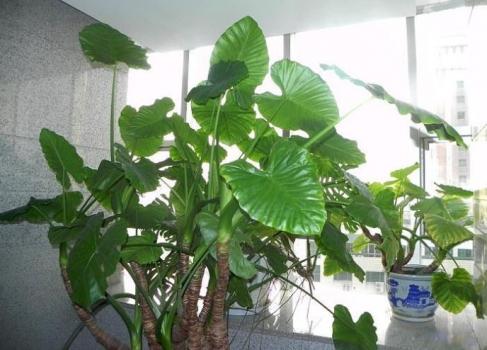
拓展:
滴水观音属天南星科直立草本,地上茎有时高达2~3米,全株最高可达5米。匍匐根状茎粗5~8厘米,圆柱形,有节,常生不定芽条。下面我们来看看滴水观音的作用:
滴水观音的作用
1、滴水观音是一种直立草本,有很好的观赏性。
2、滴水观音可以清除空气灰尘。
3、滴水观音还有药用价值,功能:清热解毒,行气止痛,散结消肿(没有药师指导不宜使用)。
注意事项:
1、滴水观音茎内的白色汁液有毒,滴下的水也是有毒的,误碰或误食其汁液,就会引起咽部和口部的不适,胃里有灼痛感。应当特别注意防止幼儿误食。
2、中毒时要及时拨打120,同时皮肤中毒可用醋酸或醋洗涤,误食中毒服蛋清、面糊或大量饮糖水缓解症状。
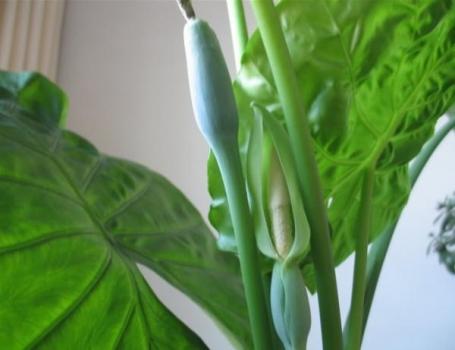
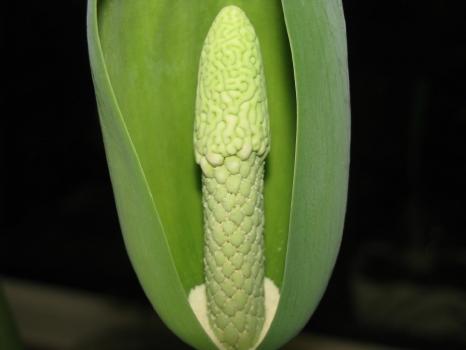
滴水观音,中文学名”海芋花“(学名:Alocasia macrorrhizos)是天南星科海芋属的植物,台湾称姑婆芋,原产南美洲,是一种常见的观赏植物。那么滴水观音有毒吗?下面让我们来了解下吧!
滴水观音是否有毒
滴水观音全株有毒,以茎干最毒。根、茎中的白色汁液有毒,滴下的“水”也有毒,如果皮肤接触,会导致瘙痒或强烈刺激,眼睛如接触可引起严重的结膜炎,甚至失明。果实红色,也有剧毒。
中毒症状:皮肤接触汁液发生瘙痒;眼与汁液接触引致失明;误食茎或叶引起舌、喉发痒,肿胀,流涎;肠胃烧痛,恶心,呕吐,腹泻,出汗,惊厥,严重者窒息,心脏麻痹而死。
解救方法:皮肤中毒可用醋酸或醋洗涤。误食中毒服蛋清、面糊,大量饮糖水或静脉滴注葡萄糖盐水。腹痛可注射吗啡。惊厥注射镇静剂,继服溴化钾或吸入乙醚。民间用醋加生姜汁少许共煮,内服或含漱。

拓展:
滴水观音属天南星科直立草本,地上茎有时高达2~3米,全株最高可达5米。匍匐根状茎粗5~8厘米,圆柱形,有节,常生不定芽条。下面我们来看看滴水观音的作用:
滴水观音的作用
1、滴水观音是一种直立草本,有很好的观赏性。
2、滴水观音可以清除空气灰尘。
3、滴水观音还有药用价值,功能:清热解毒,行气止痛,散结消肿(没有药师指导不宜使用)。
注意事项:
1、滴水观音茎内的白色汁液有毒,滴下的水也是有毒的,误碰或误食其汁液,就会引起咽部和口部的不适,胃里有灼痛感。应当特别注意防止幼儿误食。
2、中毒时要及时拨打120,同时皮肤中毒可用醋酸或醋洗涤,误食中毒服蛋清、面糊或大量饮糖水缓解症状。


0
0







